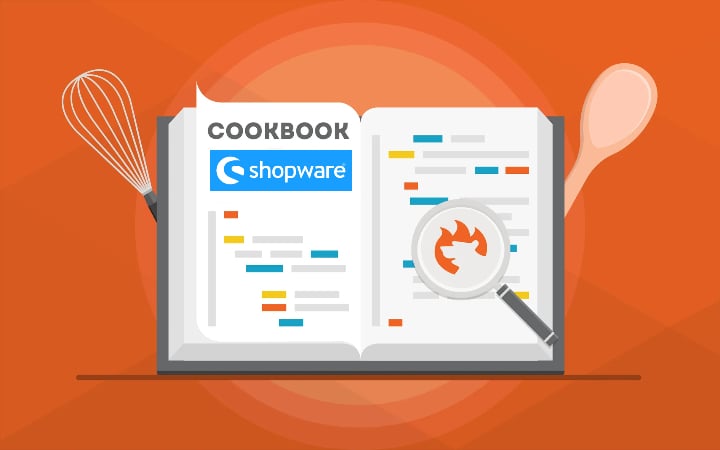How To Disable Admin Worker / Message Queue In Shopware 6

So, how to disable the Admin Worker and message queue in Shopware 6? In the following article, we explore the Admin Worker and message queue of Shopware 6. You will find out what their role is and how to disable them. Also, read our material on How To Create Scheduled Tasks In Shopware 6 to get more ideas on the topic. Other useful materials about Shopware 6 are available here.

Note that we provide Shopware integration with external platforms. Contact our support for further information or try our Improved Import, Export & Mass Actions.
Table of contents
Shopware 6 Message Queue & Admin Worker Defined
Message Queue
Shopware locates all asynchronous tasks in the so-called message queue. It is the default approach that provides the ability to process important processes independently of undesired timeouts or system crashes. And it heavily relies on the Admin Worker.
Admin Worker
Shopware 6 uses the Admin Worker to automatically process message queues in the administration in the background. The tool dramatically enhances the productivity of the admin interface.
However, using the message queue and Admin Worker in Shopware 6 is associated with possible performance issues.
Performance issues
The use of the Admin Worker in Shopware 6 assumes that the administration should be open for a longer period. Therefore, the more admin users are logged in, the more CPU is required, dramatically enhancing the load. As a result, the smooth execution of the message queues is disrupted. How to solve this performance issue?
You need to disable the Admin Worker and run the processes via CLI to complete the tasks when no one is logged in. Thus, you reduce the CPU load caused by several users. The bigger your e-commerce website is, the more sensible this performance enhancement is. Therefore, let’s see how to deactivate the Admin Worker in Shopware 6.
How to disable the Admin Worker in Shopware 6
You won’t find the disable button for the Admin Worker in the Shopware administration. Therefore, the deactivation of the Admin Worker is associated with manual adjustments at the server level. Contact your hoster before applying any changes.
You can disable the Admin Worker in Shopware 6 by editing the shopware.yaml file situated in your Shopware installation under config/packages/.
Use the following snippet as an example of how to disable the admin worker with “false”:
|
1 2 3 4 |
# config/packages/shopware.yaml shopware: admin_worker: enable_admin_worker: false |
Don’t forget to save the file.
What CLI commands to execute to run the processes
When the Admin Worker is disabled, you need to execute the following CLI commands one by one:
|
1 |
bin/console messenger:consume default --time-limit=60 |
|
1 |
bin/console scheduled-task:run --time-limit=60 |
The recommended time limit for the command execution is 60 seconds. Alternatively, you can set a memory limit.
Note that you should execute these commands regularly to ensure the message queue is continuously processed. You can do that with the help of scheduled tasks.
Shopware 6 Essentials FAQ
How to create a Shopware account?
You need to create a Shopware account before optimizing your Shopware 6 workflow by disabling the Admin Worker. You can do that on the registration page: hit the Register Now link and fill in the form to create a new account. After receiving a confirmation email, follow the instructions provided in it.
What about a Shopware ID?
You will receive your Shopware ID upon registration. No additional steps should be taken.
What is Shopware master data?
All the information about your business is Shopware master data. It is stored within the system and includes physical addresses, phone numbers, emails, etc.
How to add a new Shopware shop?
You need to create a Shopware shop to get the Admin Worker and then deactivate it. Visit your merchant area, click the corresponding link, choose the type of your new shop (a cloud storefront or an on-premise installation), and provide all the information the system requires.
How to add a payment method to your Shopware account?
A payment method is required for internal purposes. You can add it to your Shopware account under Basic Information -> Accounting. Select PayPal, credit card, or direct debit as a way to transfer funds to your account.
How to create a deposit in Shopware?
A working payment method enables you to create a deposit for purchasing extensions and themes. Go to your Merchant Area -> Shops, choose a shop to provide funds to, click Open Account Details, and transfer a deposit that covers the amount of your purchase.
How to purchase Shopware extensions?
The Plugin Manager lets you purchase Shopware 6 extensions and themes. Alternatively, you can go to the Shopware Marketplace to get new tools. In both cases, you need to create a deposit in advance that equals the amount of your future purchase. Next, select a tool you want to buy and complete the checkout.
How to get support in Shopware?
You can get help with accounting and financial issues via financial.services@shopware.com or +49 2555 9288 510. Transfer license inquiries to info@shopware.com or call +49 2555 9288 50.
How to automate import and export processes in Shopware 6?
Data transfer automation is impossible via the default tools of Shopware 6. However, you can use the Improved Import, Export & Mass Actions extension to automate transfers to and from your e-commerce website. The plugin supports scheduled import and export tasks, automating recurring data transfers according to update schedules.
How to migrate to Shopware 6?
The Improved Import, Export & Mass Actions module provides vast opportunities for migration to Shopware 6. It can help you transfer data from your existing website to the new platform. The tool lets you migrate from other e-commerce systems or Shopware’s previous versions. Note that we also offer export solutions for systems like Magento and Shopify, so you can simplify your data transfers between them and Shopware. for more information.
How to integrate Shopware 6 with external systems?
The Shopware 6 integration with ERPs, CRMs, accounting tools, and other similar platforms also requires the Improved Import, Export & Mass Actions extension and scheduled data transfers. The module can help you automate repetitive import and export processes due to schedules and mapping presets. The presets help you modify data according to the requirements of your Shopware store during import as well as follow the rules of the connected platform during export.









